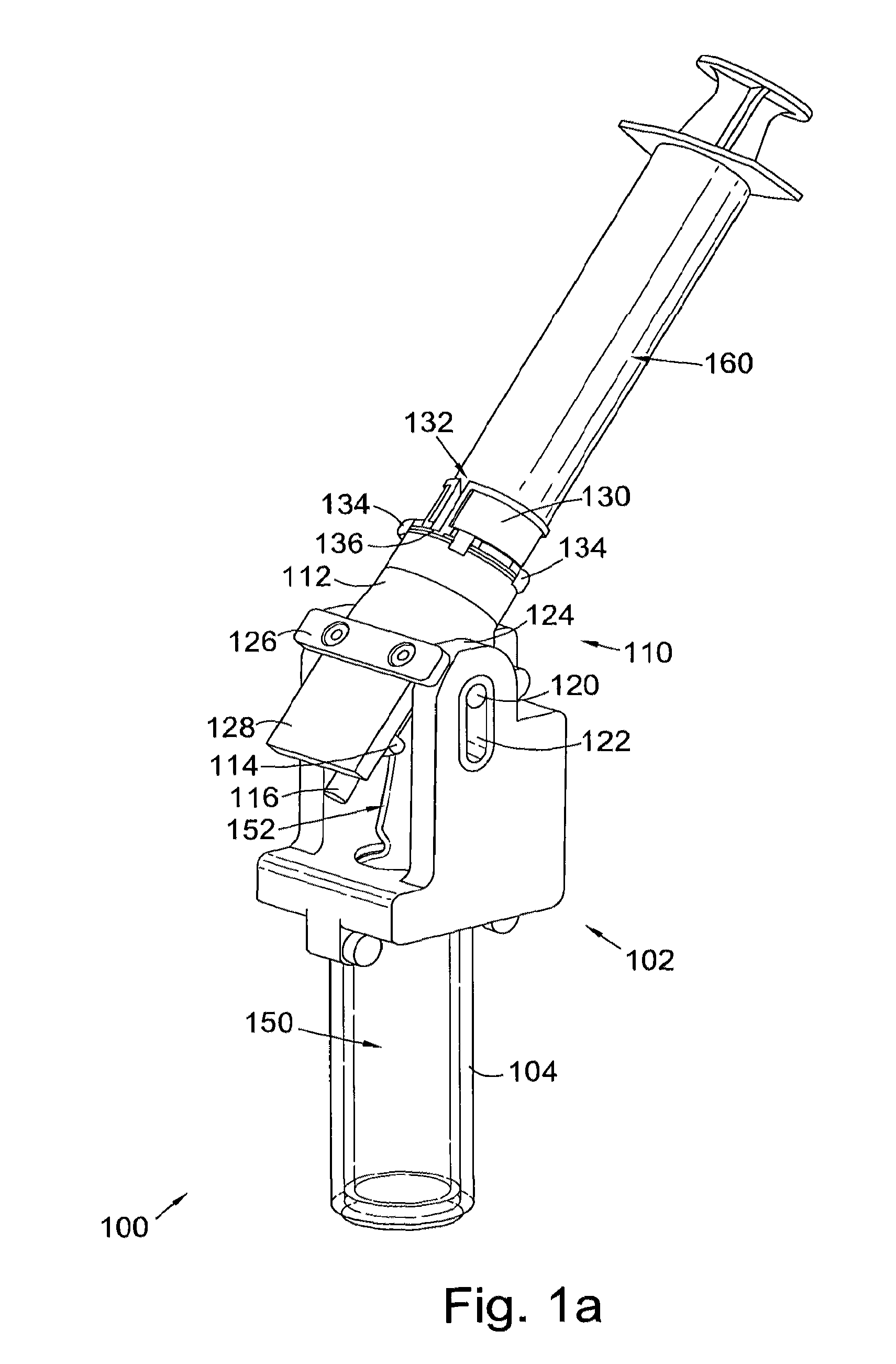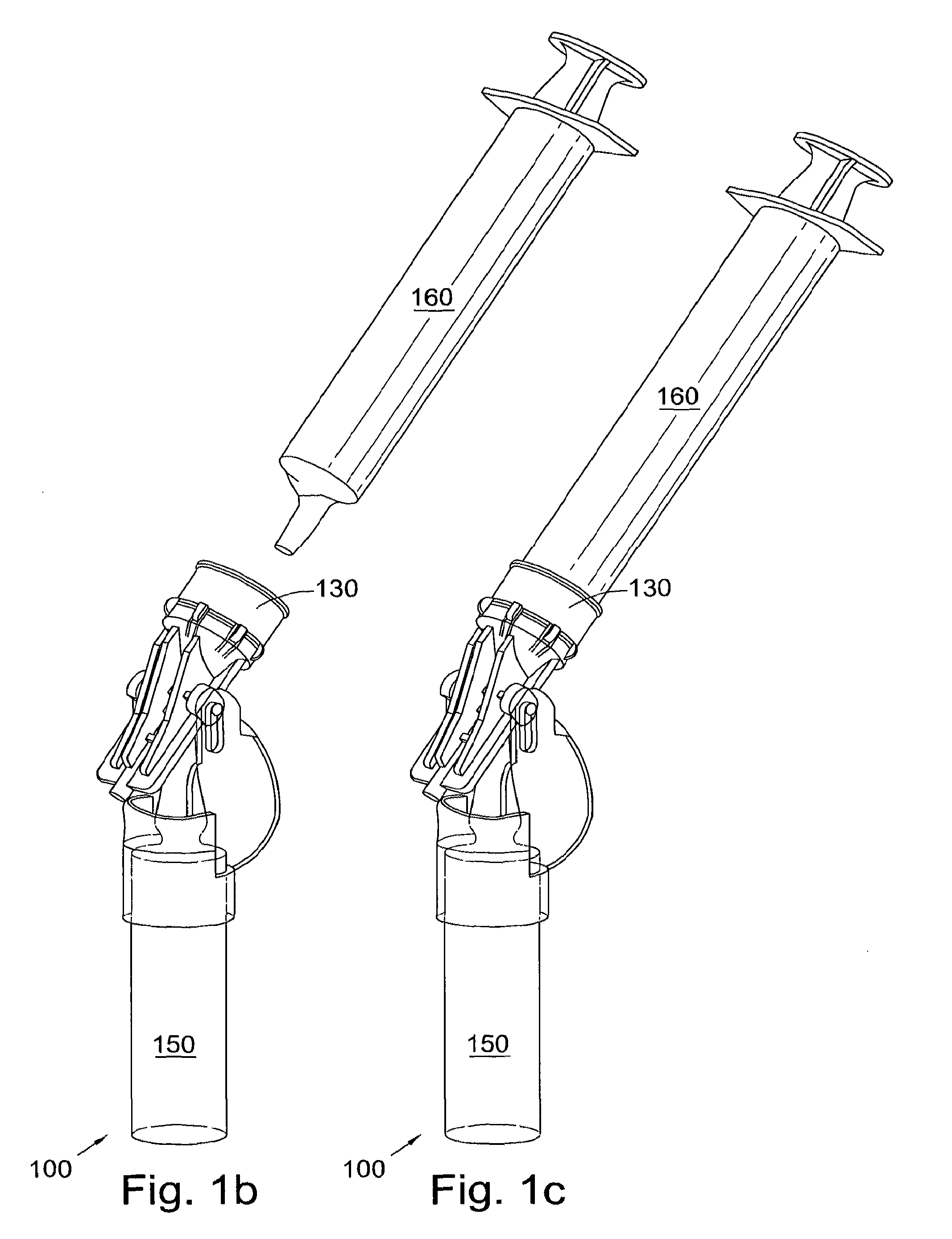Apparatus and method
a technology of syringe and ampoules, applied in the field of medical devices, can solve the problems of misidentification of syringes, difficult to read, and difficulty in reading, and achieve the effect of avoiding misidentification of syringes or ampoules
- Summary
- Abstract
- Description
- Claims
- Application Information
AI Technical Summary
Benefits of technology
Problems solved by technology
Method used
Image
Examples
Embodiment Construction
[0066]Broadly, according to one aspect of the invention we will describe a device for attaching to an ampoule to place a label referring to the contents of the ampoule to a syringe to be filled with the contents.
[0067]Referring to FIG. 1a this shows an embodiment 100 of a device for breaking the snap-top 152 of an ampoule 150 and for automatically labelling a syringe 160 after it is filled from the ampoule. The device comprises an ampoule mounting portion 102 including an ampoule holder 104 which, in the illustrated embodiment, contains the ampoule, optionally in clear plastic or with an opening to facilitate reading a label of the ampoule. The device also has a syringe-fitting portion 110 comprising a syringe housing 112 including a female luer fitting 114 having an aspiration tip or nozzle 116 for aspirating the contents of the ampoule. As illustrated the ampoule-mounting portion 102 of the device comprises a main body of the device and this is formed of two parts (front and rear)...
PUM
 Login to View More
Login to View More Abstract
Description
Claims
Application Information
 Login to View More
Login to View More - R&D
- Intellectual Property
- Life Sciences
- Materials
- Tech Scout
- Unparalleled Data Quality
- Higher Quality Content
- 60% Fewer Hallucinations
Browse by: Latest US Patents, China's latest patents, Technical Efficacy Thesaurus, Application Domain, Technology Topic, Popular Technical Reports.
© 2025 PatSnap. All rights reserved.Legal|Privacy policy|Modern Slavery Act Transparency Statement|Sitemap|About US| Contact US: help@patsnap.com



